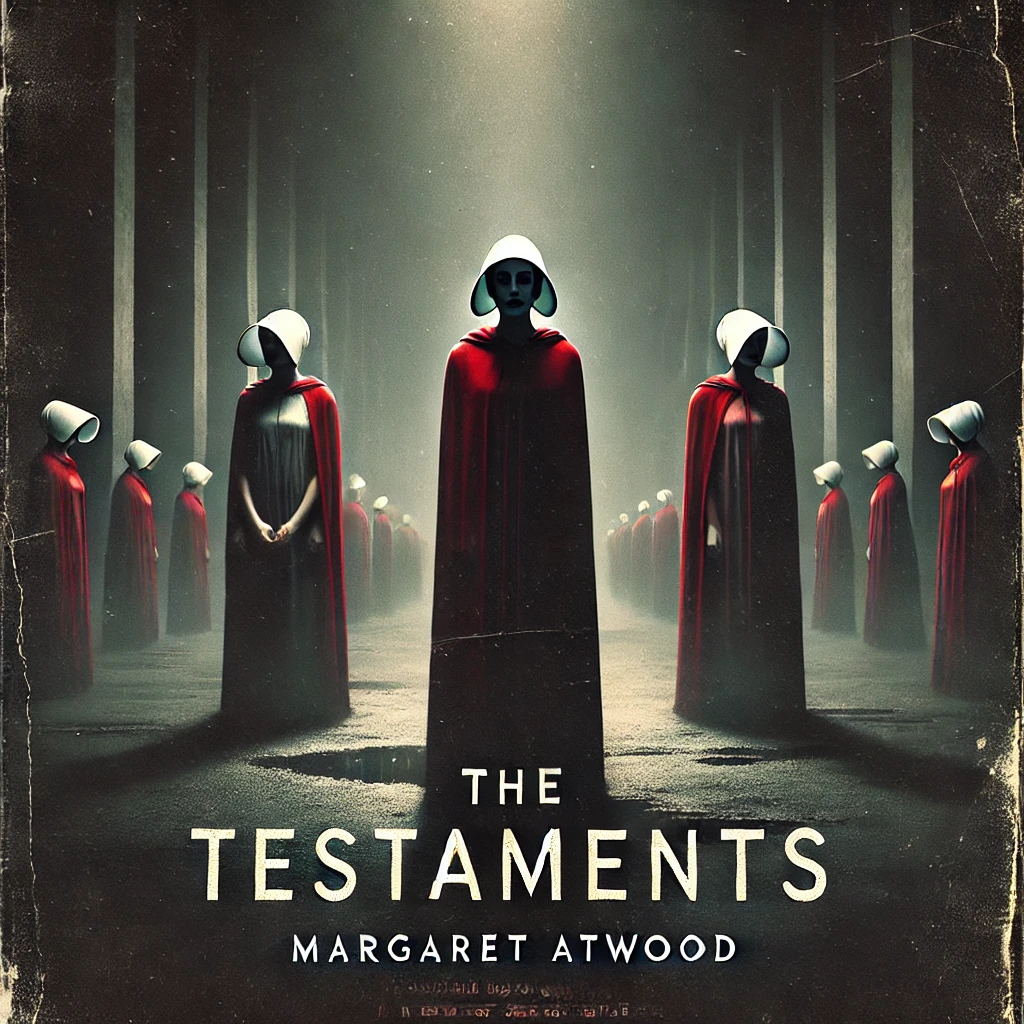Introduction to ‘The Outsider’
Stephen King’s novel, The Outsider, stands as a gripping amalgamation of crime and supernatural horror, uniquely blending genres to captivate readers. Published in May 2018, The Outsider has garnered both critical and commercial success, further solidifying King’s reputation as a master of multifaceted storytelling. Within the extensive oeuvre of Stephen King, which spans more than four decades, this novel occupies a distinct place through its intricate exploration of dual realities and the complexity of human nature.
The central narrative of The Outsider revolves around an ostensibly straightforward child murder investigation that quickly spirals into a perplexing mystery. The story begins with the gruesome murder of an eleven-year-old boy in a small town. All evidence points unequivocally towards Terry Maitland, a local teacher and Little League coach, who is subsequently arrested under a cloud of incontrovertible eyewitness accounts and forensic evidence. What muddles the investigation, however, is Terry Maitland’s solid alibi; he confidently asserts, with substantiated proof, that he was miles away at the time of the murder.
This confounding duality sets the stage for an exploration of themes that resonate throughout King’s work — the clash between rationality and the inexplicable, the darkness lurking beneath the surface of everyday life, and the inherent fragility of human perception. Through meticulous plotting and deeply developed characters, King challenges readers to question the nature of reality and the limits of empirical evidence. As the narrative progresses, it delves into supernatural elements, testing the boundaries of the traditional crime story and engaging audiences in a thought-provoking and chilling journey.
In sum, The Outsider not only underscores Stephen King’s prowess in crafting suspenseful, genre-blending narratives but also invites readers to ponder the coexistence of logic and the unexplainable within the human experience.
Plot Synopsis: A Dual Narrative
“The Outsider” by Stephen King masterfully interweaves two compelling narratives, creating a spellbinding exploration of the human psyche and the nature of evil. The story is set in the small town of Flint City and revolves around a brutal crime that shatters the community’s tranquility. The novel opens with the investigation led by Detective Ralph Anderson, a seasoned officer grappling with the horrifying murder of an eleven-year-old boy. Ralph’s meticulous nature drives him to pursue solid evidence, which leads to the arrest of Terry Maitland, a beloved local teacher and Little League coach.
In stark contrast to Ralph’s diligent investigation, Terry’s narrative provides a poignant glimpse into the life of the accused. With irrefutable evidence, including eyewitness testimonies and DNA results, pointing towards Terry, his life is irrevocably upended. However, Terry maintains his innocence, claiming an unshakeable alibi. This parallel narrative exposes the complexity of human relationships and the devastating impact of societal judgment.
The dual narratives of Ralph and Terry intertwine as the story progresses, each unveiling deeper layers of mystery and suspense. While Ralph grapples with the apparent certainty of Terry’s guilt, inconsistencies begin to surface, gradually unveiling an alternative reality that challenges conventional perceptions of truth and justice. This interplay between the two narratives propels the storyline forward, compelling readers to question the nature of evidence and the existence of an unseen malevolent force.
Through this duality, Stephen King deftly explores themes of guilt, innocence, and the fragility of human belief systems. The narrative structure not only enhances the suspense but also invites readers to immerse themselves in both protagonists’ perspectives, creating a multifaceted exploration of morality and justice. “The Outsider” ultimately presents a gripping and thought-provoking journey through intertwining realities, leaving readers on the edge of their seats until the very end.
In “The Outsider” by Stephen King, the protagonists and antagonists play pivotal roles in shaping the narrative’s progression and thematic depth. The primary character, Detective Ralph Anderson, is portrayed with a meticulous and detail-oriented approach to his profession. His methodical nature is underscored by his commitment to justice and his relentless quest for truth. Ralph’s initial conviction about Terry Maitland’s guilt reflects his adherence to evidence and logic. However, as the investigation unfolds, his character development is marked by a profound transformation. Ralph grapples with the clash between empirical evidence and the inexplicable, driving him to question his deeply held beliefs.
Terry Maitland’s character plunges from a respected community figure to a man ensnared in a nightmarish situation. Accused of an atrocious crime, Terry’s plight elicits both empathy and suspense. His steadfast declarations of innocence amidst overwhelming evidence serve to heighten the tension and ambiguity surrounding the case. Terry’s characterization underscores the themes of reputation, perception, and the fragility of human existence when faced with monstrous allegations.
Holly Gibney emerges as a significant character whose intellect and unconventional methods bring a unique dimension to the narrative. Her involvement is crucial in unraveling the supernatural elements of the story. Holly’s resilience, combined with her analytical prowess, creates a balance against Ralph’s initial skepticism. Her character development, underscored by her past experiences and acute sense of observation, propels the narrative towards its intricate confrontations with the unknown.
Other key characters, like Jeannie Anderson, Ralph’s supportive yet insightful wife, contribute layers of emotional depth and practical wisdom. Her influence on Ralph subtly guides some of his critical decisions throughout the investigation. Similarly, supporting characters who contribute to the plot’s twists and turns embody the diverse spectrum of human reactions to extraordinary events.
Overall, the intricate personalities, motivations, and evolutions of these characters drive “The Outsider” beyond a mere whodunit, enveloping it in a profound exploration of reality versus the supernatural and the resilience of the human spirit.
Themes Explored: Truth, Reality, and Skepticism
Stephen King’s ‘The Outsider’ intricately weaves a tapestry where the boundaries of truth, reality, and skepticism are continuously blurred. At the heart of the narrative lies the pursuit of truth—a concept that proves to be as elusive as it is pivotal. King’s tale delves deeply into the nature of reality, posing questions that challenge both characters and readers about the very essence of what can be believed.
Throughout the novel, characters are brought face-to-face with the unknown and the unexplainable. The investigation of a gruesome crime seemingly committed by a respected figure in the community sets the stage for this exploration. As the plot unfolds, the theme of skepticism becomes a profound undercurrent. The principal characters, including detective Ralph Anderson, struggle with the growing evidence that contradicts their perception of reality. Ralph’s journey epitomizes the conflict between empirical evidence and the unsettling possibility of supernatural influences.
The concept of believability is masterfully depicted through the dual realities presented in the storyline. King’s narrative compels the characters—and by extension, the readers—to question the reliability of their senses and the evidence before them. The conflicting testimonies and inexplicable occurrences force an examination of the nature of evidence itself. This persistent doubt serves to heighten the tension and suspense throughout the novel.
King’s portrayal of truth is complex and multifaceted. The novel suggests that truth is not always straightforward; it can often be shadowed by layers of disbelief and supernatural ambiguity. By presenting a world where the natural and the supernatural coexist, King effectively emphasizes that truth and reality are not always aligned with human perception or rationality.
In ‘The Outsider,’ Stephen King creates an atmosphere where skepticism is both a barrier and a pathway to understanding. The characters’ confrontations with the inexplicable underscore a broader commentary on the human condition and the perennial quest for truth amidst uncertainty. Through this narrative, King invites readers to ponder the intricate dance between what is known, what is believed, and what remains mystifyingly unknown.“`html
Setting and Atmosphere: Building Suspense
The settings in Stephen King’s “The Outsider” play a crucial role in enhancing the suspenseful atmosphere of the novel. The story begins in the small town of Flint City, an archetypal American community where everyone knows each other. This seemingly serene backdrop is shattered by a gruesome murder, immediately transforming the familiar into a landscape fraught with tension. King’s depiction of Flint City is detailed and meticulous, lending an eerie sense of realism that makes the ensuing horrors all the more unsettling.
As the narrative progresses, other significant locales are introduced, each meticulously crafted to amplify the suspense. An abandoned train yard becomes a pivotal scene, its desolation and decrepitude mirroring the despair that envelops the characters. Similarly, the woods surrounding the town, cloaked in shadow and silence, serve as a canvas for the unexplained and the terrifying. King’s skillful use of sensory details immerses the reader in these environments, making the tension palpable.
Stephen King’s atmospheric writing in “The Outsider” is instrumental in building the novel’s pervasive sense of dread. Descriptions of mundane settings—like homes, schools, and public places—are imbued with a sense of foreboding, suggesting that something sinister lurks just beneath the surface. The contrast between the ordinary and the horrific is stark, heightening the impact of the supernatural elements as they emerge.
The shifting settings also reflect the dual realities that the characters must navigate. Whether it’s a courthouse, a hospital, or a secluded cave, each locale is layered with both literal and symbolic meaning, reinforcing the novel’s themes of hidden truths and unseen horrors. This interplay between setting and atmosphere is a testament to King’s mastery of suspense, keeping readers engaged and on edge as the plot unfolds.
Supernatural Elements: Blurring the Lines of Reality
In Stephen King’s “The Outsider,” the supernatural elements are interwoven seamlessly into the fabric of the narrative, challenging both the characters’ and readers’ perceptions of reality. A central supernatural motif in the novel is the concept of the doppelgänger, an uncanny double that mirrors a person in almost every aspect. This phenomenon embodies the tension between what is visibly tangible and what lies beyond the realm of rationality.
The existence of a doppelgänger disrupts the fundamental trust in empirical evidence and logical deduction. Characters are forced to reconcile their understanding of reality with the inexplicable presence of a being that defies conventional wisdom. The doppelgänger represents an intrusion of the supernatural into the natural world, creating a palpable sense of unease and suspicion. This element is pivotal as it catalyzes the narrative’s development, driving characters to question the nature of their reality and the reliability of their senses.
King expertly utilizes the supernatural to perpetuate the mystery surrounding the crimes in the storyline. As the investigation unfolds, the characters’ grasp on rational explanations begins to wane, giving way to a reluctant acceptance of the supernatural. This acceptance is not immediate but evolves through a gradual erosion of logical explanations, confronting the characters with the harrowing possibility that the doppelgänger is real. This internal struggle between rationality and the supernatural is reflected in the characters’ interactions and decision-making processes.
The resolution of the novel hinges significantly on acknowledging and confronting these supernatural elements. It is only through accepting the doppelgänger’s existence that the protagonists can devise a strategy to resolve the mystery. Thus, the supernatural is not merely an ancillary element, but a crucial linchpin that shapes the narrative’s course and its ultimate conclusion. In “The Outsider,” Stephen King masterfully blurs the lines of reality, leaving an indelible impact on the characters and readers alike.
Critical Reception and Impact
‘The Outsider,’ by Stephen King, received predominantly positive reviews from both critics and readers upon its release. Critics praised the novel’s intricate plot and its successful blending of genres, often highlighting King’s ability to craft a compelling narrative that oscillates between crime fiction and supernatural horror. Renowned for his masterful storytelling, King did not disappoint; his exploration of dual realities in ‘The Outsider’ garnered admiration for its depth and originality.
Review aggregators such as Goodreads and Amazon reflect the general positive sentiment with average ratings of 4.1 and 4.5 out of 5 stars respectively. Additionally, prominent literary publications offered their commendations. The New York Times lauded the novel as a “riveting thriller that takes readers into the darkest corners of the human psyche,” while The Guardian appreciated its “eerie and unsettling atmosphere, a hallmark of King’s established prowess in horror fiction.”
The book also found recognition in the form of awards and nominations. ‘The Outsider’ was a finalist for the Goodreads Choice Award in the Horror category and received the Bram Stoker Award for Best Novel, corroborating its status within the literary community and beyond. Such accolades not only affirm the novel’s quality but also solidify King’s standing as a preeminent figure in contemporary literature.
For fans of Stephen King, ‘The Outsider’ was another testament to his unwavering ability to innovate within his chosen genres. It expanded the author’s repertoire, bridging a narrative intersection between the known and the unknown, the mundane and the supernatural. The novel did more than just add another title to King’s extensive bibliography; it reiterated his relevance and adaptability in the ever-evolving literary landscape.
Adaptations and Further Media
Stephen King’s “The Outsider” has garnered significant attention not only for its compelling narrative but also for its adaptation into a different medium, most notably the HBO miniseries. This visual reinterpretation, released in 2020, allows the story to reach a broader audience, offering a new dimension to the haunting tale King crafted. Starring Ben Mendelsohn and Cynthia Erivo, the miniseries has been lauded for its atmospheric tension and faithful adherence to the novel’s core narrative.
However, as is often the case with adaptations, there are notable differences between the book and the miniseries. One primary difference lies in the pacing. The novel, with its richly detailed prose and introspective passages, provides a slow burn, allowing readers to fully immerse themselves in the psychological depth and dual realities. The miniseries, while maintaining the essence, condenses certain plot points to fit standardized episodic formats, necessitating abridgment of some character arcs and particular subplots.
Another key variation is in the portrayal of Holly Gibney, a character recurrent in King’s universe. In the miniseries, Cynthia Erivo’s portrayal introduces nuances distinct from the book’s version. These slight character reconceptions serve the visual medium, providing a fresh yet familiar experience for both new viewers and King’s long-time fans alike. Additionally, certain scenes in the series amplify visual horror elements that are more subtly woven into King’s text, catering to the on-screen audience’s expectations for suspense and immediate impact.
The translation of “The Outsider” from a novel to a TV series has undeniably expanded its reach, allowing exploration of themes of guilt, identity, and the supernatural to resonate widely. While each medium offers a unique lens through which the story can be experienced, both the book and the adaptation maintain the gripping duality that wins over audience hearts and minds.



